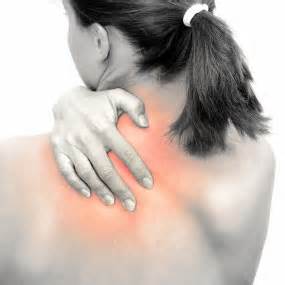How Pain Originates In the Body

|
Rabbi Harold Kushner |
Musculoskeletal pain attacks the human body at every vulnerable target - the muscles, ligaments and tendons, along with the bones. Back pain affects 80% of Americans at some time in their lives. It comes in many forms, from lower back pain, middle back pain, or upper back pain to low back pain with sciatica. Common back pain causes nerve and muscular problems, degenerative disc disease, and arthritis.
For many, the injury is triggered by a strenuous activity like weight lifting. Others simply bend down to pick up a pencil and their back gives out. People with musculoskeletal pain sometimes complain that their entire bodies ache. Their muscles may feel like they have been pulled or overworked. Sometimes the muscles twitch or burn. Symptoms vary from person to person, but the common symptoms are: Pain, Fatigue, Sleep disturbances and Numbness.
The human body maintains life and health in an amazing way. Each individual cell performs an activity that contributes to the body's overall function. Nerve impulses transmit information to maintain a balanced internal environment - called homeostasis. Every day, life situations threaten to disrupt that balance. Physical traumas, strains and emotional stress undermine homeostasis. This imbalance leads to aches and pains which left untreated may result in physiological dysfunction.
Pain is a very important indicator for us to pay attention and change what we are doing to protect us from harm. Pain is actually created by the brain for good reasons. The response may be a protective mechanism of PAIN. We know that nerves carry impulses, or signals, from the body’s tissues that tell the brain about the state of the tissues. Information such as excessive stretch, excessive strain, over-compression, tearing, bleeding, swelling etc. is transmitted to the brain. Once the brain receives these signals then the brain decides on best approach to protect the body. Without this protective response we would be much more likely to do more severe damage to ourselves, and for this reason pain is a very successful protective mechanism.

Fibromyalgia is estimated to affect 2–4% of the population, with a female to male incidence ratio of approximately 9:1. Fibromyalgia occurs along with other rheumatic diseases such as Lupus and Rheumatoid Arthritis 25-65 percent of the time.
Diagnosis can take on average five years with 60 percent of fibromyalgia patients diagnosed in their 30s and 40s, another 35 percent diagnosed in their 20s or between the ages of 50-65.
In order to better understand pain mechanism, a short discussion of anatomy and pathology is appropriate. As we all know, muscles are surrounded by fascia. This connective tissue plays an important role in the determination of the extent of muscle stretch and contraction. It is very important to understand that fascia also provides pathways for nerves and blood vessels.
Due to the prolonged pathological hyper tonus in muscles, fascia becomes tense causing compression of muscle fibers, nerve tissue and blood vessels. The condition of constant muscle tension creates an overload (strain) on muscles and tendons. Strain always leads to the development of inflammation.
A chronic inflammatory condition of the skeleto-muscular system causes secondary changes in neurotransmitter levels and activities in the central nervous system. The changes appear after the patient starts to experience chronic pain. In such a case, the initial trigger is in the skeletal muscles where local, pathological abnormalities were developed.
Authors of many studies have detected significant depletions of adenosine tri-phosphate (ATP) concentration, as well as other high-energy phosphates in the skeletal muscles. ATP is a major energy source for muscular contraction. When a nervous command arrives through a motor neuron to a skeletal muscle to produce a contraction, ATP molecules are used. When a muscle needs to relax, it again uses ATP molecules. It is important to remember that constant (chronic) muscular hypertension uses and exhausts the stores of ATP.
Imagine a situation where the concentration of ATP is decreased. The motor commands arrive from the central nervous system to the muscles, and muscular contraction is achieved using available ATP. However, when the muscle needs to relax, ATP is in short supply, as most of it has been used in the contraction. In such a case, some of the muscle fibers remain in the contracted state, even during periods of relaxation. New nervous commands arrive, and again, all available ATP is used to produce a contraction.
This is how tension starts to build. The more tension builds up in skeletal muscles, the more tension we can find in the fascia, aponeurosis and other soft tissues. Tension causes a decrease in elasticity, and it starts to affect microcirculation. A mismatch between motor nervous commands and insufficient arterial blood supply initiates changes in the local pH, followed by the activation of pain receptors. It's at this time the patient starts to feel pain.
- How pain originates in the body
- What are five reasons that cause pain
- What is the right posture
- What is the right gait pattern
- What is the musculoskeletal distortion
- What are reasons to develop muscles tension
- What are ways to protect your musculoskeletal system





